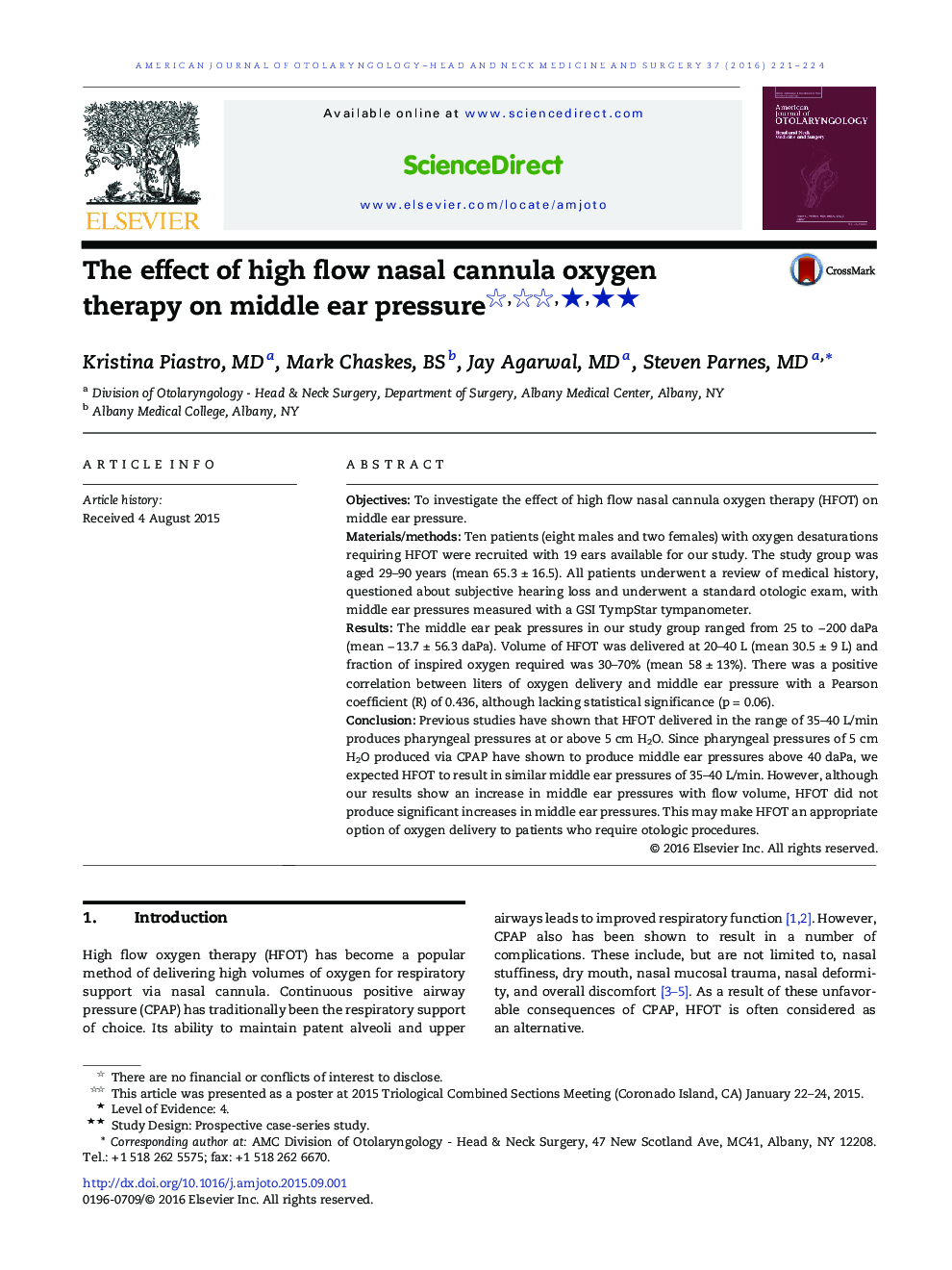| Article ID | Journal | Published Year | Pages | File Type |
|---|---|---|---|---|
| 4103026 | American Journal of Otolaryngology | 2016 | 4 Pages |
ObjectivesTo investigate the effect of high flow nasal cannula oxygen therapy (HFOT) on middle ear pressure.Materials/methodsTen patients (eight males and two females) with oxygen desaturations requiring HFOT were recruited with 19 ears available for our study. The study group was aged 29–90 years (mean 65.3 ± 16.5). All patients underwent a review of medical history, questioned about subjective hearing loss and underwent a standard otologic exam, with middle ear pressures measured with a GSI TympStar tympanometer.ResultsThe middle ear peak pressures in our study group ranged from 25 to − 200 daPa (mean − 13.7 ± 56.3 daPa). Volume of HFOT was delivered at 20–40 L (mean 30.5 ± 9 L) and fraction of inspired oxygen required was 30–70% (mean 58 ± 13%). There was a positive correlation between liters of oxygen delivery and middle ear pressure with a Pearson coefficient (R) of 0.436, although lacking statistical significance (p = 0.06).ConclusionPrevious studies have shown that HFOT delivered in the range of 35–40 L/min produces pharyngeal pressures at or above 5 cm H2O. Since pharyngeal pressures of 5 cm H2O produced via CPAP have shown to produce middle ear pressures above 40 daPa, we expected HFOT to result in similar middle ear pressures of 35–40 L/min. However, although our results show an increase in middle ear pressures with flow volume, HFOT did not produce significant increases in middle ear pressures. This may make HFOT an appropriate option of oxygen delivery to patients who require otologic procedures.
